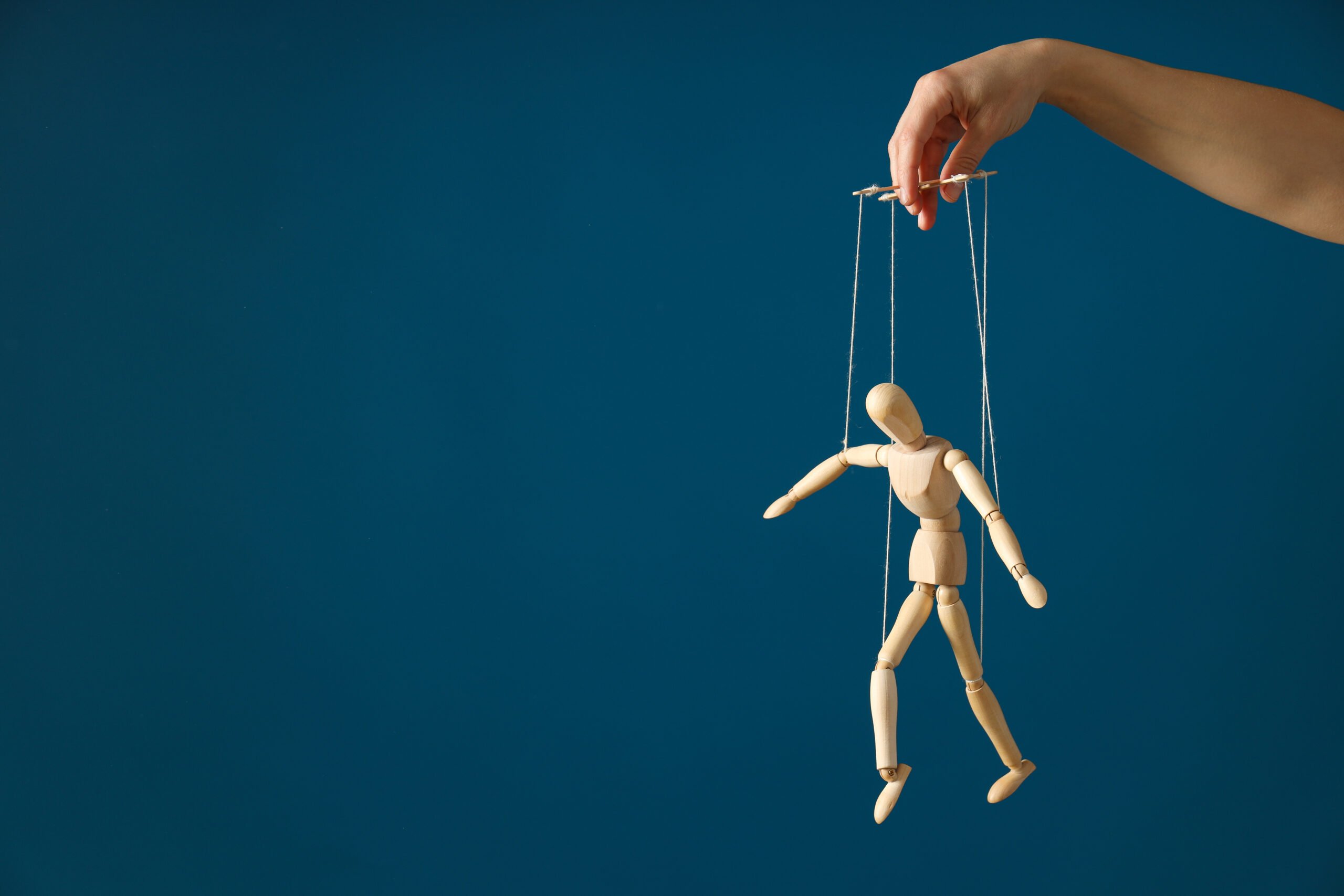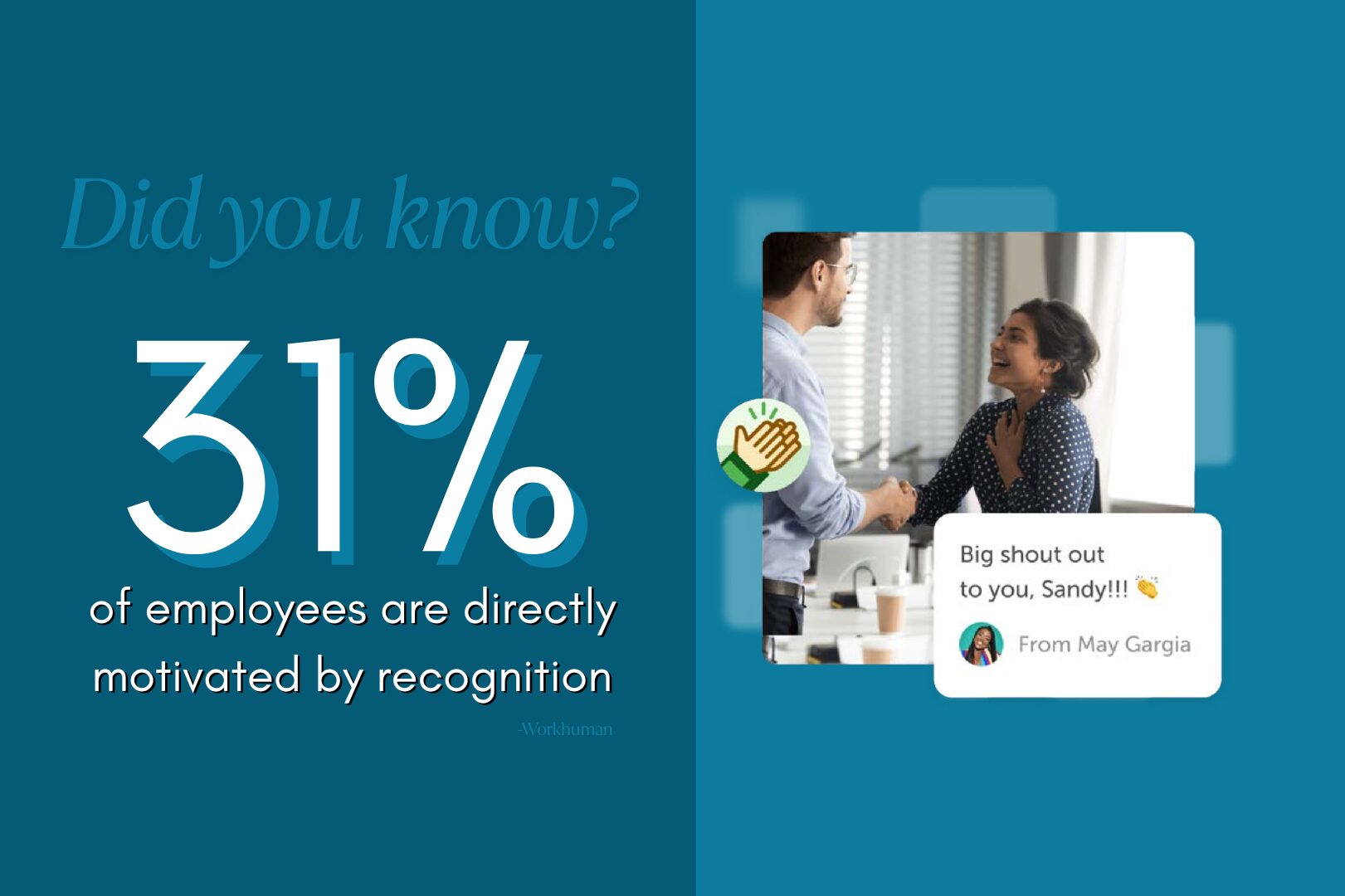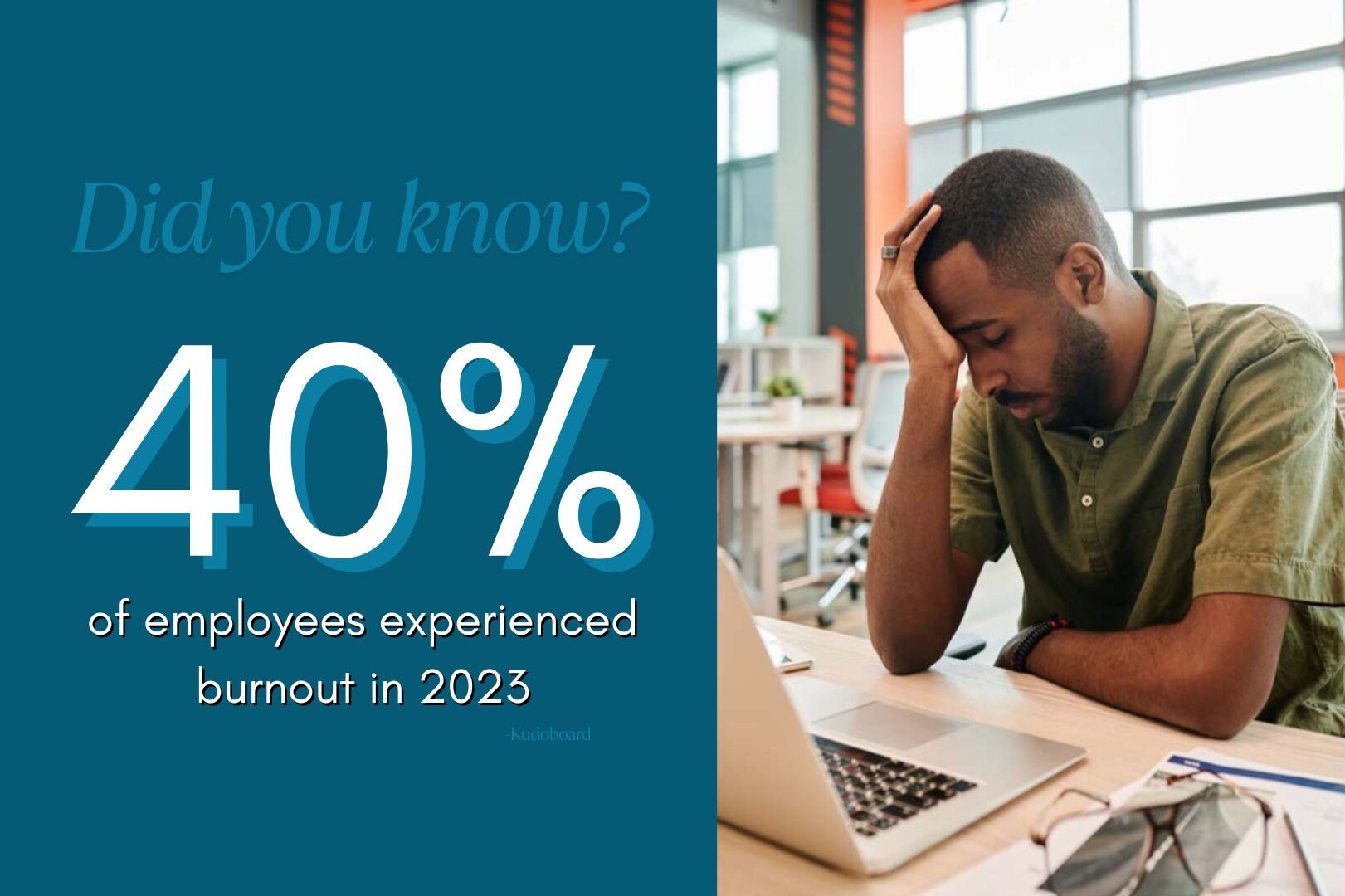In this day and age, there are many buzzwords in the business world. Employee recognition is a buzzword that companies should focus on. According to Nectar HR, 83.6% of employees feel recognition affects their motivation to succeed. Along with that statistic, most employees think that they would be more productive if leadership/management recognized the employee more frequently at work. Many ways exist to provide employee recognition, and many businesses are adopting recognition programs to streamline the recognition process. Read on to understand more about employee recognition programs, why they fail, and (more importantly) how to make your employee recognition platform successful.
10 Reasons Why Employee Recognition Programs Fail
There are many reasons why an employee recognition program could fail, and the main reason that isn’t listed is when a company doesn’t recognize the difference between recognition and appreciation. Appreciation means “recognition and enjoyment of the good qualities of someone or something. Employee appreciation (or workplace appreciation) is an appreciation of your workers and their value. Recognition, on the other hand, is focusing on gratitude for an employee’s actions. Knowing this difference can significantly impact the success of a company’s recognition program.
Another critical aspect of employee recognition to know is the different types of recognition: top-down/managerial, peer-to-peer, bottom-up, and public recognition. Top-down recognition is simply a recognition from leadership down to an employee. Peer-to-peer recognition is recognizing a fellow peer for their hard work. Bottom-up recognition comes from an employee to a manager or other leadership. Finally, a company gives public recognition to any of its employees in a public fashion.
Now, let’s dive into the top 10 reasons why a company’s employee recognition program might fail.
Read More: 25 Employee Appreciation Ideas That Really Work
- Lack of Alignment With Organizational Goals
Employee recognition programs may fail because they don’t align with company goals and values. The heart of the company, the company’s culture, matters when planning and creating an employee recognition plan. If a recognition plan doesn’t align with the company culture/values/goals, employees won’t feel connected to it, and the recognition efforts will feel disingenuous.
- Poor Design and User Experience

A recognition program can fail if it is poorly designed or has a poor user experience. If a program isn’t user-friendly, people won’t use it, and recognition efforts won’t be made through it. The purpose of a recognition program is to make it easy for users to recognize one another, and employee’s can’t correctly recognize each other with a poorly designed program.
- Inconsistent Implementation
When a company isn’t consistent about a recognition program that they are promoting management, leadership, and employees to use, it can cause a distrust of leadership and uncertainty among employees about fairness of recognition. This lack of uncertainty and distrust can affect company culture, employee engagement, and the overall morale of the workplace.
- Failure to Capture Informal Recognition

Another problem companies might run into when implementing a recognition program is failing to capture informal recognition. This type of recognition is essential, and the results are impactful, especially as a company embraces a culture of appreciation through small gestures of informal recognition. Informal recognition could come in the form of a quick thank-you email or a sticky-note left on someone’s desk.
(Psst! Informal Recognition is easy with Kudoboard!)
- Lack of Integration With Existing Systems
Many companies utilize multiple software programs to run their business effectively. Programs like Slack, Microsoft Teams, and others help companies effectively communicate. When a recognition program doesn’t integrate with these communication programs used daily by companies, it is less likely that the company will use the recognition program.
- The Recognition Program Doesn’t Lead To An Improved Culture
Unfortunately, not all recognition programs will benefit a company. The main reason for a recognition program is to create a positive work environment where employees feel valued and motivated by pointing out the good employees do regularly, which can improve the company’s culture. When a recognition program isn’t leading to an improved culture, it could be due to many reasons: leaders need to be using the program, an overemphasis on rewards, or clearer criteria may be needed. Companies can track if their culture is improving through employee feedback, surveys, and metrics through the recognition program.
- The Recognition Only Goes One Way
Imagine you are a manager who cares about your team; you recognize them for their hard work and ensure that your team dynamics are healthy and balanced. However, you never get recognition from your employees. Would you feel very satisfied or happy with the work? Probably not. When recognition only goes one way (top-down, bottom-up, or one peer to another), it can be helpful for the company. However, when recognition goes BOTH ways, the results of a good employee recognition program are evident.
- Generic Recognition

Another reason companies might find their recognition programs failing is generic appreciation. When management/leadership sends generic messages of recognition, the messages are usually ineffective because they lack personalization and sincerity, which can lead to employees feeling undervalued. These generic messages can also reduce any trust that has been built up between employees and the company. Additionally, generic messages miss the chance to reinforce desired behaviors and outcomes by not linking the recognition to any specific achievements.
- Lack of Training
When a company rolls out a new employee recognition program, it is vital to train those who will use it to ensure its success. Anyone who will be using the program should be trained to ensure that all employees understand how to use the platform and appreciate the value of participating.
- It Is Used As A Tool To Change Employee’s Behavior

While all companies want their employees to be engaged, happy, successful, and enjoy all the other wonderful benefits of a successful employee recognition program, companies should not use the program to change employee behavior. If the employees find out that companies are using the recognition program to change their behavior, it can be perceived as manipulation.
When recognition is tied to behavior modification, intrinsic motivation can be undermined. Employees will not want to work as hard because they won’t feel appreciated for their overall contributions.
Using a recognition program as a tool to change behavior also only focuses on short-term growth. If a company truly wants to see the changes from a recognition program, it should be focused on long-term growth and development. Recognition programs should aim to foster a culture of appreciation that supports ongoing employee engagement and satisfaction.
How to Make Your Employee Recognition Platform a Success
Now that we’ve discussed why a recognition program might fail, let’s discuss how to make the program successful. Effective employee recognition programs should be designed to appreciate and celebrate employees’ contributions genuinely. To ensure that outcome, here are seven ways to help your recognition program thrive.
Create Unity

One of the first ways a company can help a recognition program succeed is to create unity among the company regarding the new program. One way to do this is to involve employees in the design or choosing of the program. Engage them by choosing a program through surveys, focus groups, and feedback sessions to ensure the program reflects employees’ preferences and values.
Another way companies can create unity with a new program by celebrating team and individual achievements. This will help foster a shared sense of purpose and direction.
Companies can also encourage all forms of recognition: informal, top-down, bottom-up, and peer recognition. Encouraging all types of recognition will help strengthen relationships within the company, build trust, and create a supportive community.
Tie To Your Core Values
Most companies have a list of values or a sense of company culture. When companies introduce a new recognition program, they should ensure that it aligns with the culture and values that they’ve already built. Many companies have excellent culture and recognition programs. These companies are household names, and because of the positive work culture that their employee recognition programs create, they have become an example to others and attract top talent.
To ensure that a new recognition plan aligns with a company’s core values, the company first needs to revisit its values. By truly understanding the company’s values and culture, leadership can develop criteria that directly reflect these values.
Additionally, companies can communicate the purpose of the recognition program and how it ties into the company’s values. Explain to the employees and leadership how recognizing and rewarding specific behaviors supports the company’s mission and goals.
Enhance Your Company Culture with workplace appreciation that delivers.
Personalized
A recognition message must be personalized and specific to be more meaningful and significantly impact the recipient. Whether you are writing a peer recognition message, a recognition letter for an employee, or any other type of recognition message, the main idea is to be specific and highlight a recent achievement.
Companies can also personalize a recognition message by using the employee’s name. It sounds simple, but it does make an impact.

Consistent
Consistency is critical for many things, and recognition is no different. When a company is consistent with a recognition program, it inspires the employees and leadership to use the program more often, which leads to a more supportive and appreciative workplace.
Consistency also helps reinforce positive behavior and actions that the company wants to promote. When employees see that positive actions are consistently recognized, they are more likely to repeat those behaviors.
Consistent recognition also supports employee retention by increasing employee loyalty. Employees who feel consistently valued are more likely to stay with the organization.
In short, consistency with recognition is vital for the success of a recognition plan and for fostering a supportive and appreciative work environment.
Increase Awareness and Training
A recognition program can only succeed if people know about it. When rolling out a new program, companies need to provide adequate awareness and training. All employees, not just leadership, need to be trained and prepared to use the program.
Set Clear Objectives
Companies can ensure the success of their company by setting clear objectives regarding the new recognition program. What are some outcomes that the leadership would like to see as a result of a successful recognition program? By outlining clear objectives, the results will be easier to obtain. Remember, “Recognition isn’t just about implementing employee programs to check them off a list; it’s about bringing out the best in people and improving your company’s bottom line.” –Harvard Business Review.
Monitor and Evaluate
The final step to ensuring the success of a new employee recognition program is to continuously monitor and evaluate its progress, usage, and other metrics. This could include asking employees for feedback about the program and adjusting it as needed.
Benefits of Strong Employee Recognition
Once a company has a successful recognition program, it can expect to see many different benefits of creating a culture of recognition.
Improved Morale
One of the first benefits companies will see is an improved sense of morale among employees. This improved morale is due to employees feeling valued and appreciated. Regular recognition can also alleviate some of the day-to-day stress/tension many employees think.
Improving employee morale is vital because morale reflects how employees feel about their place of work. It is significant because it is tied directly to employee engagement, job satisfaction, retention, and overall productivity. Companies can see that employee morale is a cornerstone of the employee experience.
Enhanced Employee Experience
Employee experience is a way to explain the overall feelings an employee may have throughout their journey at a company. An employee experience can be negative or positive based on several checkpoints throughout their journey or “employee life cycle.” When a company utilizes frequent, personalized recognition, the employees receiving this recognition have a more enhanced employee experience than those not receiving the same amount of recognition.
Improved Employee Engagement
Quantum Workplace has found that when employees believe they will be recognized they are 2.7x more likely to be highly engaged. That engagement is huge for companies because that engagement can impact the company’s success for better or for worse. Companies should focus on employee engagement because engagement directly relates to other important aspects, such as better employee health, increased productivity, decreased turnover, and a better company culture.
Culture of Appreciation
It is safe to assume that we’ve all experienced the positive impact of being recognized at work and the negative impact of not being recognized for what we feel are valuable achievements and time spent at a company. When companies utilize a recognition program properly, they are building a culture of appreciation. That culture can grow through companies focusing on appreciating all achievements, big and small. Companies should focus on developing a culture of appreciation because that leads to a more positive workplace, an improved sense of community, and so much more.
Decreased Burnout
Companies that create a culture of recognition and appreciation see a decrease in burnout. Unfortunately, burnout has many symptoms that extend beyond exhaustion, including cynicism, loss of productivity, insomnia, anger, headaches, and more. Companies can prevent burnout and its symptoms with meaningful recognition, which can address many of the symptoms of burnout. Recognition builds a culture of appreciation, which builds community. When times are hard, people often find refuge in having a community; the workplace is not immune to that. Having a connected workplace makes a big difference when employees are having a hard time. That connection alone can combat many of the burnout symptoms.

Simple Launch, Powerful Features
Imagine an employee recognition program that supports your company, ties to core values, has built-in training, and has ways to track analytics such as user-level, board/post, gratitude insights, and other usage metrics. If you would like a program like that, look at Kudoboard. Kudoboard is built for all the milestones and moments, from a small thank you to a big retirement send-off. Additionally, Kudoboard can integrate with Slack or MS Teams, making collaboration and recognizing employees authentically easy. With kudoboard, you’ll never wonder if your recognition program works because you’ll see the benefits, and your employees will love it. Try our business trial enrollment for free, and see for yourself. In the meantime, check out Kudoboard’s blog for more tips and tricks regarding all things business.




